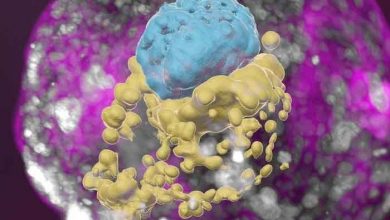Unravelling the mystery that makes virus infectious

T he findings, published in the journal PLOS Pathogens by a team from the Universities of Leeds and York, open up the possibility that drugs or anti-viral agents can be developed that would stop such infections.
Once a cell is infected, a virus needs to spread its genetic material to other cells. This is a complex process involving the creation of what are known as virions — newly-formed infectious copies of the virus. Each virion is a protein shell containing a complete copy of the virus’s genetic code. The virions can then infect other cells and cause disease.
What has been a mystery until now is a detailed understanding of the way the virus assembles these daughter virions.
Professor Peter Stockley, former Director of the Astbury Centre for Structural Molecular Biology at Leeds, who part supervised the research with Professor Reidun Twarock from York, said: “This study is extremely important because of the way it shifts our thinking about how we can control some viral diseases. If we can disrupt the mechanism of virion formation, then there is the potential to stop an infection in its tracks.”
“Our analysis suggests that the molecular features that control the process of virion formation are genetically conserved, meaning they do not mutate easily — reducing the risk that the virus could change and make any new drugs ineffective.”
The research at Leeds and York brings together experts in the molecular structure of viruses, electron microscopy and mathematical biology.
The study focuses on a harmless bovine virus that is non-infectious in people, Enterovirus-E, which is the universally adopted surrogate for the poliovirus. The poliovirus is a dangerous virus that infects people, causing polio and is the target of a virus eradication initiative by the World Health Organization.
The enterovirus group also includes the human rhinovirus, which causes the common cold.
The study published details the role of what are called RNA packaging signals, short regions of the RNA molecule which together with proteins from the virus’s casing ensure accurate and efficient formation of an infectious virion.








